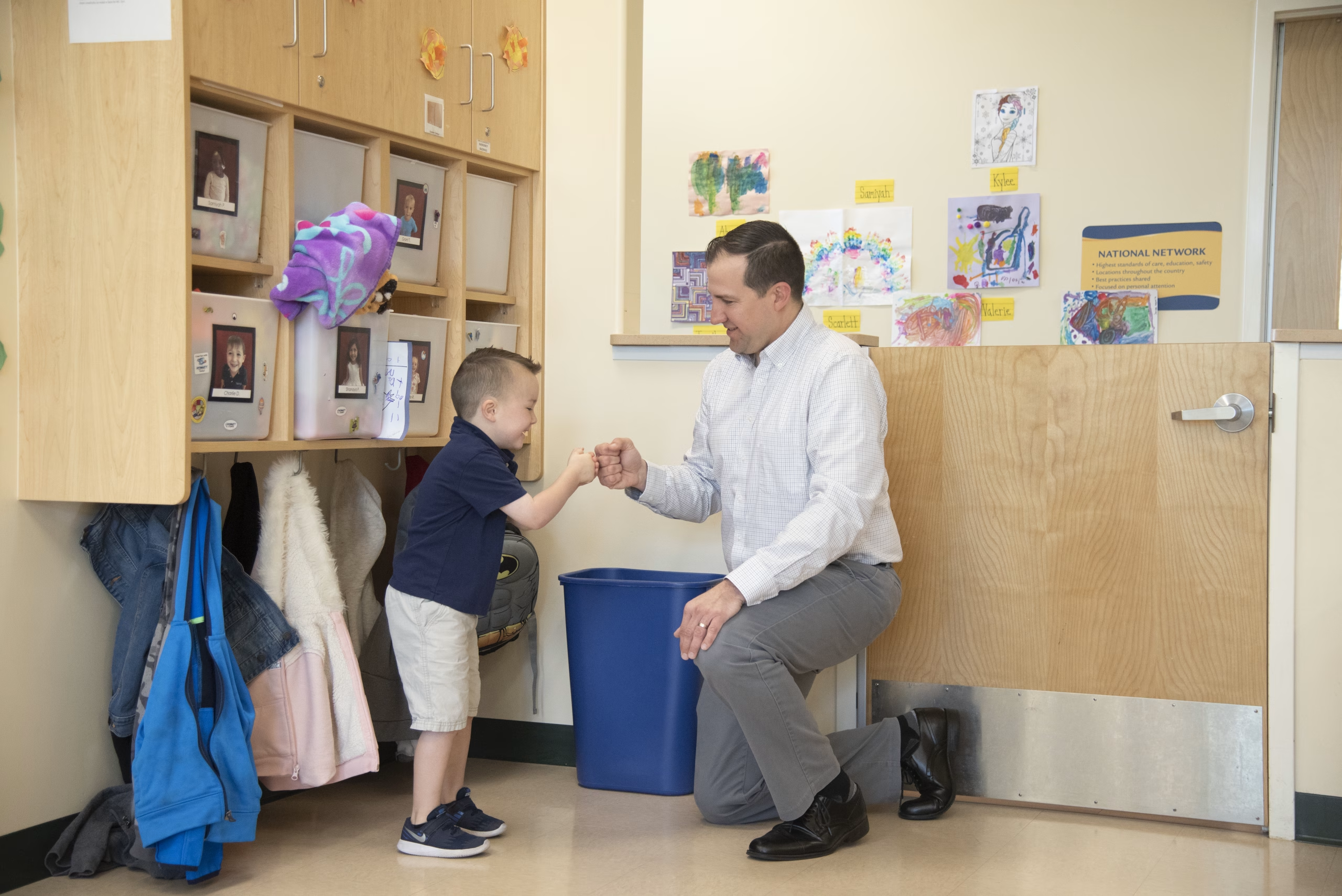
“There is always that awkward feeling running into the parent of a child who you know your child recently bit,” said Erin, mom of three – ages 6, 4, and 18 months. “Do I say hello? Are we not friends anymore because my child bit your child? Should I apologize? ‘hey, sorry my kid took a chunk out of your kid’s arm with his teeth!’ Nothing seems super appropriate.”
When you have young kids, it’s just a matter of time before you get a call from your child’s school to tell you that your child has bitten another child. Literally and metaphorically, you think, Ouch. As a parent, your heart sinks thinking about the inappropriate behavior associated with this incident, that you expected more from your perfect angel and how could this have been prevented. Secondly, you ask, “well, was he hungry?”
The truth is, hunger could be one of the reasons a small child tries to bite, along with reasons of self-expression and plain ole’ curiosity. According to the National Association for the Education of Young Children (NAEYC), there are a few different kinds of biters:
The Experimental Biter: It is not uncommon for an infant or toddler to explore their world, including people, by biting. Infants and toddlers place many items in their mouths to learn more about them. Teach the child that some things can be bitten, like toys and food, and some things cannot be bitten, like people and animals. Another example of the Experimental Biter is the toddler who wants to learn about cause and effect. This child is wondering, ‘What will happen when I bite my friend or mommy?’ Provide this child with many other opportunities to learn about cause and effect, with toys and activities.
The Social Biter: Many times an infant or toddler bites when they are trying to interact with another child. These young children have not yet developed the social skills to indicate ‘Hi, I want to play with you.’ So sometimes they approach a friend with a bite to say hello. Watch young children very closely to assist them in positive interactions with their friends.
The Frustrated Biter: Young children are often confronted with situations that are frustrating, like when a friend takes their toy or when daddy is unable to respond to their needs as quickly as they would like. these toddlers lack the social and emotional skills to cope with their feelings in an acceptable way. They also lack the language skills to communicate their feelings. At these times, it is not unusual for a toddler to attempt to deal with the frustration by biting whoever is nearby. Notice when a child is struggling with frustration and be ready to intervene. It is also important to provide words for the child, to help him learn how to express his feelings, like “That’s mine!” or “No! Don’t push me!”
The Threatened Biter: When some young children feel a sense of danger they respond by biting as a self-defense. For some children biting is a way to try to gain a sense of control over their lives, especially then they are feeling overwhelmed by their environment or events in their lives. Provide the toddler with nurturing support, to help him understand that he and his possessions are safe.
The Imitative Biter: Imitation is one of the many ways young children learn. So it is not unusual for a child to observe a friend bite, then try it out for herself. Offer the child many examples of loving, kind behavior. Never bite a child to demonstrate how it feels to be bitten.
The Teething Biter: Infants and toddlers experience a lot of discomfort when they’re teething. A natural response is to apply pressure to their gums by biting on things. It is not unusual for a teething child to bear down on a person’s shoulder or breast to relieve some of their teething pain. Provide appropriate items for the child to teeth on, like frozen bagels, teething biscuits, or teething rings.
The Attention-Seeking Biter: Children love attention, especially from adults. When parents give lots of attention for negative behavior, such as biting, children learn that biting is a good way to get attention. Provide lots of positive attention for young children each day. It is also important to minimize the negative attention to behaviors such as biting.
The Power Biter: Toddlers have a strong need for independence and control. Very often the response children get from biting helps to satisfy this need. Provide many opportunities for the toddler to make simple choices throughout the day. This will help the toddler feel the sense of control they need. It is also important to reinforce all the toddler’s attempts at positive social behavior each day.
Take comfort, parents, that toddlers baring teeth is not unusual or uncommon, however likely it is painful for them and you, if bitten!
“Biting is a typical behavior often seen in infants, toddlers, and 2-year-olds. As children mature, gain self-control, and develop problem-solving skills, they usually outgrow this behavior,” according to the National Association for Educating Young Children (NAEYC). NAEYC experts say, “a child might bite to relieve pain from teething, satisfy a need for oral-motor stimulation,” or to, “communicate needs, get attention.”
Infants especially learn about the world around them by exploring it with their hands and mouths. With the development of language, however, slowly and surely the incidents of biting decrease with age.
“Sometimes when I play with my 2-year-old toddler, he comes running at me like a zombie – mouth open, teeth barred, lunging to take a chunk of skin out of my bare shoulder,” said another mom. “I’ll be honest, sometimes when I see him coming at me with teeth, I’ll run the other way and hide. Those bites are painful!”
Yes, taking a bite from a child, even one with small teeth, can hurt. But here are a few of Kiddie Academy’s time-tested, family-approved tips for handling that first (or a series!) of nips:
- Don’t beat yourself up. As much as you think biting could have been avoided, it can’t every time. Just acknowledge that your little one has “bitten off” another milestone for the memory book.
- Make it clear that the behavior is unacceptable. Use your mom voice and tell your little biter that “we don’t do that!” Repeat occurrences are not welcomed and you should make that known.
- Re-direct your biter. This is a great opportunity to change things up and redirect your kiddo to a new activity with less opportunity to bare teeth.
- Read a book. Reading a book together about a new phase like biting can really help set the record straight for expectations in the home and at school. In a book like, “Teeth are not for biting,” you can start small discussions with your kiddo about why children might want to bite and what they can do instead of biting, like drink a cold drink or ask for a hug.
Should you apologize to other parents when your little vampire takes a bite out of a friend? It’s not necessary to say “sorry” on behalf of your biter, but it can sometimes be appreciated by the bitee. Either way, don’t place blame and remove anger and emotion by accepting that this, as with most unattractive behaviors in kids, is just a phase that will pass.
Has your child ever bitten someone else? What did you do? What do you think you would do if your kiddo took a bite out of a buddy? Tell us in our one-question emoji poll!






